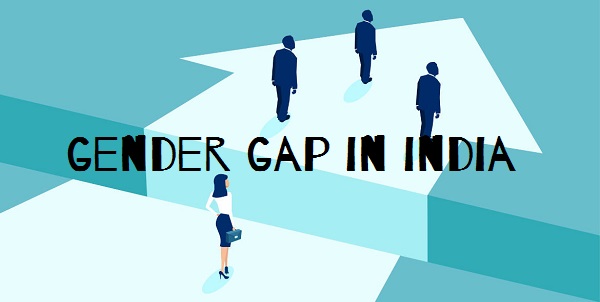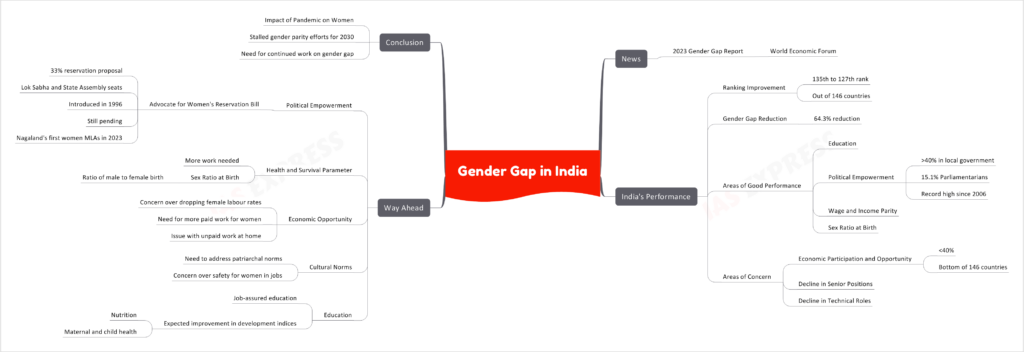Gender Gap in India- Performance in the 2023 Gender Gap Report

From Current Affairs Notes for UPSC » Editorials & In-depths » This topic
IAS EXPRESS Vs UPSC Prelims 2024: 85+ questions reflected
The 2023 Gender Gap Report was recently published by the World Economic Forum. The report shows that India has improved its rankings, but much more remains to be done.

How has India performed?
- India has improved its ranking, in terms of gender parity, by 8 positions- from 135th rank last year to 127th rank this year. This is out of 146 countries.
- It has reduced its gender gap by 64.3%.
- It has performed well in:
- Education
- Political empowerment- >40% representation in local government and 15.1% of the Parliamentarians.
- Wage and income parity
- Sex ratio at birth
- Notably, women’s participation in the Parliament is the highest it has been since the report’s inaugural edition in 2006.
- India recorded <40% with regards to economic participation and opportunity. This puts it near the bottom of the 146 country list.
- The percentage of women in senior positions and technical roles has declined.
What is the way ahead?
- The improving performance under the political empowerment head should spur the legislature to take the Women’s Reservation Bill forward.
- This Bill proposes 33% reservation of Lok Sabha and State Legislative Assembly seats for women.
- This Bill was first introduced way back in 1996 and is still pending.
- The fact that Nagaland has elected its 1st two women MLAs only this year, after having attained statehood in 1963, speaks volumes about the current situation.
- While India has improved its parity through better sex ratio at birth, much remains to be done with regards to other aspects of the health and survival parameter.
- Sex ratio at birth is the ratio of male to female birth.
- On the economic opportunity side, the female labour participation rates are dropping, leading to a decline in household incomes.
- Women need to get more paid work. As they are engaged in so much unpaid work at home, they are left with little time and energy for paid work.
- There is a need to address the patriarchal and cultural norms that impede even those women who hold paid jobs. There are also safety concerns needing attention.
- Job-assured education would automatically ensure improvement across other development indices like nutrition, maternal and child health, etc.
Conclusion:
The pandemic has been especially hard on the women and has stalled our attempts to realize gender parity by 2030. However, it is imperative continue work towards bridging the gender gap in earnest.
Practice Question for Mains:
Comment on India’s performance in the 2023 Global Gender Gap Report. How can we bridge the gap? (250 words)
If you like this post, please share your feedback in the comments section below so that we will upload more posts like this.

